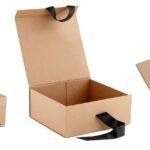Temple filler injections have become a cornerstone in facial aesthetic treatments, offering a subtle yet transformative enhancement. By restoring volume to the temples, practitioners can rejuvenate the upper face, lift the brows, and harmonize facial proportions. However, this procedure requires a deep understanding of facial anatomy, precise technique, and an artistic eye to achieve natural-looking results.
Understanding the Temple Area
The temple region, located on the sides of the forehead between the eyes and hairline, is a critical area in facial aesthetics. As individuals age, they often experience volume loss in this area, leading to a hollowed appearance that can make the face look tired or prematurely aged. Restoring volume here not only rejuvenates the face but also enhances the overall facial harmony.
Choosing the Right Filler
Selecting the appropriate Temple Filler is crucial for achieving desired outcomes. Hyaluronic acid (HA) fillers are commonly used due to their immediate results and reversible nature. They provide volume restoration and can be adjusted if necessary. Alternatively, biostimulatory fillers like Sculptra stimulate collagen production over time, offering gradual and longer-lasting results. The choice between these fillers depends on patient goals, injector expertise, and desired longevity of results.
Injection Techniques
Expert practitioners employ various injection techniques tailored to the individual’s anatomy and desired outcomes. Some of the most effective methods include:
1. Supraperiosteal Injection
This technique involves injecting filler directly onto the bone beneath the periosteum. It’s particularly useful for patients with significant volume loss, as it provides deep support and a strong foundation for the overlying tissues. A 25-gauge needle is typically used for this approach. Injecting slowly and in small amounts ensures even distribution and reduces the risk of complications.
2. Interfascial Injection
The interfascial plane lies between the superficial and deep temporal fascia. Injecting filler into this plane can provide a natural-looking result by avoiding superficial irregularities and offering a smooth contour. Ultrasound guidance is often employed to visualize the anatomy and ensure the precise placement of the filler. This technique allows for real-time monitoring and adjustment during the procedure.
3. Retrograde Horizontal Fanning with a Cannula
This advanced technique involves using a cannula to inject filler in a retrograde fashion while fanning horizontally. It allows for precise filler placement between anatomical layers, optimizing distribution and enhancing contour. This method minimizes the risk of complications and is particularly effective in achieving a natural, youthful fullness in the temples.
Safety Considerations
The temple area is rich in critical structures, including the superficial temporal artery and branches of the facial nerve. Injecting too superficially or in the wrong plane can lead to serious complications such as vascular occlusion, nerve injury, or skin necrosis. Therefore, a thorough understanding of the anatomy and cautious technique are paramount.
Zones of Caution
Certain areas within the temple region are considered high-risk zones due to the proximity of vital structures. Injectors should avoid areas where the superficial temporal artery and its branches are located. Using ultrasound guidance can help visualize these structures and guide safe injection practices.
Patient Assessment
Before proceeding with temple filler injections, a comprehensive assessment is essential. This includes evaluating the patient’s facial anatomy, understanding their aesthetic goals, and discussing potential risks and benefits. Informed consent should be obtained, and expectations should be managed to ensure patient satisfaction.
Post-Treatment Care
After the procedure, patients may experience mild swelling, bruising, or tenderness at the injection sites. These effects typically resolve within a few days. Patients are advised to avoid strenuous activities and direct sun exposure for at least 24 hours post-treatment. Follow-up appointments may be scheduled to assess the results and make any necessary adjustments.
Conclusion
Temple filler injections are a powerful tool in facial rejuvenation, offering subtle yet significant enhancements to the upper face. Achieving optimal results requires a combination of technical skill, anatomical knowledge, and an artistic approach. By employing advanced injection techniques, prioritizing safety, and tailoring treatments to individual patient needs, practitioners can deliver natural-looking and harmonious outcomes that enhance facial aesthetics.



